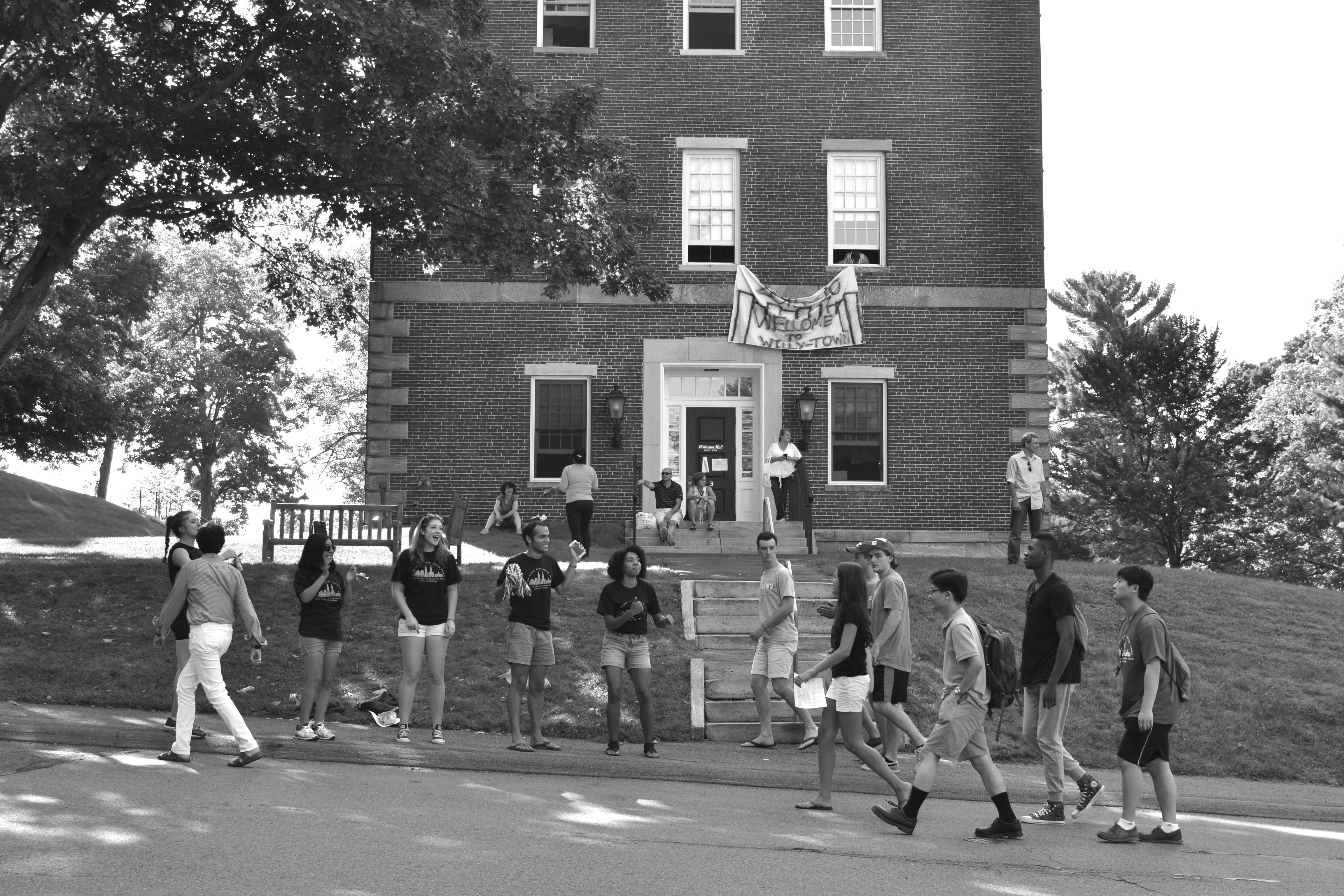

A calligrapher, a musician who plays nine instruments and the founder of an organic farm were among the 477 new first-years who descended on campus Tuesday, marking the start of Amherst’s orientation week.
Members of the class of 2019 weathered a highly competitive admissions process: The college received a record 8,568 applications this year. Amherst admitted 1,210 of those applicants, making for a 14.1 percent acceptance rate.
“The class of 2019 is another amazing group of talented, caring, engaged, bright individuals who will make a difference in our lives at Amherst and beyond,” said Dean of Admission Cate Zolkos.
Twenty new transfer students also participated in Amherst’s orientation this week.
Students arrived at Amherst from 28 countries and 41 states, plus Washington, D.C. and Puerto Rico.
Forty-four percent of first-years are American students of color, including a record-setting 10 Native American students. In 2014, the Office of Admission stepped up its efforts to recruit Native American applicants, adding a special program for Native students as part of its Diversity Open House programming.
A little more than 12 percent of first-years are first-generation college students, and 56 percent of the class are receiving financial aid.
After arriving on campus, the class of 2019 moved into their dorms and kicked off a seven-day orientation program that includes squad meetings, registering for classes and learning about aspects of campus culture such as sexual respect and student health.
Dean of New Students Rick López said that this year’s orientation incorporates significant changes from previous programs, many of which were a result of student feedback.
“We want new students to feel that their job is not to acculturate to some pre-existing Amherst student culture, but to see themselves as real agents in the creation of that culture,” López said. “To that end, we are putting student-to-student engagement, mutual respect and student-faculty relations at the center.”
The revamped program features blocks of free time built into the schedule in order for students to socialize, performers to audition for groups and athletes to practice with their teams. The aim of this free time is to offer students “the freedom to engage their new home and community on their own terms,” López said.
The mandatory “Learn, Explore, Activate, Participate,” or LEAP, orientation programs, which were introduced last year, were kept in the schedule. This year’s LEAP offerings include the usual outdoor and community service trips as well as creative writing programs, a program at the Mead Art Museum and a program at Book and Plow Farm.
This year’s orientation is also two days shorter than last year’s. Presentations from previous years were condensed into short online videos. And some events, such as the annual DeMott lecture, were moved out of orientation and into the semester.
López also said that because students have said in the past that they would have liked more engagement with faculty during orientation, first-years have now been given more time to meet with advisers and department representatives.
According to López the perceived divide in the community between athletes and non-athletes was another focus in the changes to orientation.
“This year the Office of Student Affairs and the Athletics Department are doing a lot to narrow this divide,” López said. “Coaches and team captains are emphasizing to new team members the importance of fully immersing themselves into orientation, reassuring them that they will have time later to bond with their teams.”
Classes will begin on Tuesday, Sept. 8.
Hello, after reading this awesome post i am as well glad
to share my know-how here with friends.
My blog provide athletic